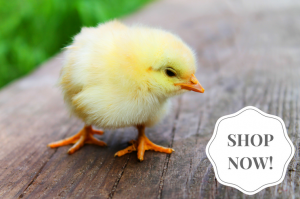
Autosex chicks have differing down colors at hatch, by which the males may be readily distinguished from the females. Autosex differs from sex-link in being a straightbred (purebred) characteristic, rather than the result of a hybrid cross between two separate breeds. Here is how to tell the males from the females in 22 autosex breeds and varieties of chickens and geese:
Males are paler, with white head spots that may be large, irregular, elongated, scattered, or missing.
Females have darker down and legs; head spots that are small, compact, and narrow; distinctly yellow toes.
Bielefelder Chickens
Males have a light brown dorsal/chipmunk stripe and a distinct white head spot.
Females have a dark brown dorsal stripe that extends over the head.
Black-Breasted Red & Silver Duckwing Chickens
Males have a lighter dorsal stripe ending in a dot at the crown.
Females have a dark dorsal stripe running along the back to the crown.
Buckeye, New Hampshire & Buff Orpington Chickens
Males have a white or cream-colored spot on each upper wing.
Females have either a dark spot on the head or dorsal stripes along the back.
Cream Legbar Chickens
Males have an indistinct light-colored dorsale strip.
Females have a broad, dark dorsal stripe that extends over the head, and a small, pale head spot.
Rhode Island Red Chickens
Males have a white or cream-colored spot on each wing and on the belly.
Females have darker red down color.
Dark Cornish, Light-Brown and Silver Leghorn & Welsumer Chickens
Males have a light-colored dorsal stripe, sometimes ending in a dot at the crown.
Females have a dark dorsal stripe extending over the head.
Dark Norwegian Jaerhon Chickens
Males are brown with a large head spot.
Females are brown with a small head spot.
Light Norwegian Jaerhon Chickens
Males are all yellow.
Females are yellow with a brown dorsal stripe.
Crele Penedesenca Chickens
Males have gray down.
Females have brown down.
Embden, Roman & Sebastopol Geese
Males have pale gray and yellow down.
Females are darker gray.
Pilgrim Geese
Males have yellow down.
Females have gray down.
Shetland Geese
Males have yellow down.
Females are gray and yellow.
Among these breeds, some strains are bred to emphasize the autosex characteristics. Otherwise the at-hatch differences can be difficult to discern, resulting in a reduced sexing accuracy of 80 to 95 percent.
And that’s today’s news from the Cackle Coop.
Gail Damerow is the author of Hatching and Brooding Your Own Chicks: Chickens, Turkeys, Ducks, Geese, Guinea Fowl

